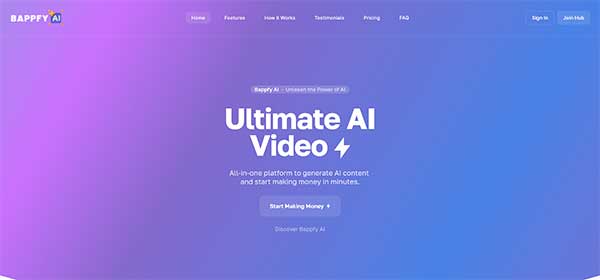As a SaaS company, your website is the cornerstone of your online presence. It’s where potential customers go to learn about your product, read about your company culture, and, ultimately, decide whether or not to do business with you.
That’s why it’s crucial to make sure that your website is optimized for search engines. In this article, we’ll explore some of the best practices for SaaS SEO to help you increase visibility and drive more traffic to your website.
What Is SaaS SEO?
SaaS (Software as a Service) SEO refers to optimizing a SaaS company’s website and its web pages to rank higher in search engine results pages (SERPs) rankings for relevant keywords.
This can help drive more traffic, leads and sales to a SaaS company’s website, and is a crucial aspect of online marketing and digital growth.
The process of optimizing a SaaS website for SEO can include keyword research, on-page optimization, backlink building, and regular tracking and analysis of performance.
While many SaaS companies rely on performance marketing to scale customer acquisition, they’re realizing the costs are rising and relying solely on paid methods can be disadvantageous.
SaaS SEO is crucial because it provides consistent traffic and organic growth, unlike paid advertising that stops when turned off.
This is why more SaaS businesses are investing in SEO to diversify traffic sources and reduce acquisition costs. SaaS SEO focuses on improving a platform’s organic search visibility for customers:
SaaS SEO shares similarities with other SEO methods, but it’s important to remember that Google’s ranking factors remain constant, with the top three being content, backlinks, and RankBrain.
To achieve success with SaaS SEO, create great content that answers user queries and earn backlinks naturally.
Keyword Research
The first step in optimizing your website for search engines is to conduct thorough keyword research. This involves identifying the keywords and phrases that your target audience is searching for when they’re looking for a product like yours.
You can use tools like Google’s Keyword Planner or SEMrush to get a sense of the volume and competition for different keywords. Once you have a list of relevant keywords, you can start incorporating them into your website content.
On-Page Optimization
Next, it’s time to focus on on-page optimization. This involves making sure that your website is structured in a way that is easy for search engines to understand and that all of the content on your website is optimized for your target keywords.
Some of the key on-page optimization techniques include:
Title tags: The title tag is the text that appears in the search engine results pages (SERPs) and is the first impression that potential customers will have of your website. Make sure that your title tags are descriptive, concise, and include your target keywords.
Meta descriptions: The meta description is the text that appears under your title tag in the SERPs. It should be a brief summary of what your website is about and should include your target keywords.
Header tags: Header tags (H1, H2, H3, etc.) help to structure your content and make it easier for search engines to understand what your page is about. Make sure to use header tags appropriately and include your target keywords in the H1 and H2 tags.
Content: Your content should be high-quality, relevant, and include your target keywords. Don’t stuff your content with keywords, as this can hurt your search rankings, but make sure that your keywords are used in a natural and meaningful way.
Technical Optimization
In addition to on-page optimization, there are a number of technical optimizations that you should consider. These include:
URL structure: Make sure that your URLs are short, descriptive, and include your target keywords.
Sitemap: A sitemap is a file that lists all of the pages on your website. It helps search engines to crawl your website more efficiently and can improve your search rankings.
Mobile optimization: With the increasing use of mobile devices, it’s crucial to make sure that your website is optimized for mobile. This means making sure that your website is responsive, loads quickly, and is easy to navigate on smaller screens.
Site speed: Site speed is a crucial factor in search rankings. The faster your website loads, the better your search rankings will be. Use tools like GTmetrix or Google PageSpeed Insights to assess your site speed and identify areas for improvement.
Link Building
Link building is the process of acquiring links from other websites to your own. These links help to increase your visibility in search engines and can improve your search rankings. There are a number of different link building strategies that you can use, including:
Guest blogging: Reach out to other websites in your niche and offer to write a guest blog post in exchange for a link back to your own website. This can be a great way to build relationships with other websites and increase your visibility.
Infographics: Create informative and shareable infographics that other websites will want to link to.
Resource pages: Find resource pages in your niche and reach out to the website owners to ask for a link.
Broken link building: Find broken links on other websites in your niche and reach out to the website owners to offer them a replacement link from your own website.
Sponsored content: Work with other websites in your niche to create sponsored content that includes links back to your own website.
Measuring Success
The final step in optimizing your website for SaaS SEO is to measure your success. There are a number of tools and metrics that you can use to track your progress and see what’s working and what’s not. Some of the key metrics to track include:
Search engine rankings: Use tools like SEMrush or Ahrefs to track your search engine rankings for your target keywords.
Traffic: Use Google Analytics to track the number of visitors to your website and how they’re interacting with your content.
Conversions: Use tools like Google Analytics or Mixpanel to track the number of conversions that your website is generating.
Backlinks: Use tools like Ahrefs or Moz to track the number of backlinks that your website is acquiring and their quality.
By following these best practices for SaaS SEO and measuring your success, you can ensure that your website is optimized for search engines and driving more traffic and conversions. Good luck!
Staying Up-to-Date with SaaS SEO
SEO is an ever-changing field, and it’s important to stay up-to-date with the latest trends and best practices. Here are a few ways to stay informed:
Read industry blogs: Stay informed on the latest trends and best practices by reading industry blogs like SEMrush, Moz, and Search Engine Journal.
Attend conferences: Attend SEO and SaaS conferences to learn from industry experts and network with other professionals.
Join online communities: Join online communities like Reddit’s /r/SEO and LinkedIn groups to stay informed and connect with other SEO professionals.
Experiment: Try new techniques and strategies to see what works for your website. SEO is a constantly evolving field, and the only way to stay ahead of the game is to be constantly experimenting and trying new things.
By staying up-to-date with SaaS SEO, you can continue to improve your website’s rankings and drive more traffic and conversions.
Conclusion
SaaS SEO is a crucial part of driving traffic and generating conversions for your website. By following the best practices outlined in this article, you can optimize your website for search engines and stay ahead of the competition.
Remember to focus on creating high-quality, relevant content, building high-quality backlinks or consider hiring an SEO expert who can provide you with the guidance and support you need to succeed.









